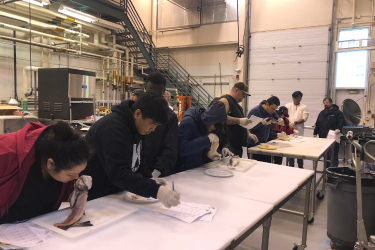Where did you grow up?
I grew up in Emmaus, Pennsylvania, a small town outside of Allentown (for those that remember the Billy Joel song).
Where did you go to school and in what subject did you get your degree(s)?
I received my Bachelor of Science degree in Marine Biology from Millersville University of Pennsylvania and my doctorate in Marine Science from the Virginia Institute of Marine Science, College of William and Mary.
How did you come to work at the Southeast Fisheries Science Center?
I worked for the Atlantic States Marine Fisheries Commission for about 11 years, 10 of which were as the Research and Statistics Director. I then worked for NOAA Fisheries Headquarters for about 5 years as the National Cooperative Research Coordinator and the National Observer Program Coordinator. I moved to the Gulf coast after getting hired by the center as the Director of the Pascagoula laboratory. I decided it was a great time to relocate and work for NOAA Fisheries in the field. The laboratory director position provided me with the opportunity to work at a more regional level as well as raise my daughter in a more rural setting.
What do you do at the science center?
I am currently the Deputy Director for Science and Operations. I oversee the Operations, Management, and Information Division activities such as facilities, IT, administration, and budgeting, as well as the science programs for the Marine Mammal and Sea Turtle Division and the Population and Ecosystem Monitoring Division.
Who is the most influential person you know? How do they inspire you?
The most influential woman I know, although not personally, is Kathryn Sullivan who was the NOAA Assistant Administrator in 2013–2014. She inspired me with her ability to reach out to staff on a personal level, whether via email or in person. She showed that she really cared about not only what the staff were working on but also on how they were doing. She is a good role model to other women in how to balance being a strong leader with the ability to really get to know people on a personal level.
What do you like most about your position?
I like being in a position where I can influence the way the center functions, both in the science realm and in the administrative aspects of our jobs. In recent years, we have seen many great changes and improvements in how the center functions, including the new strategic plan and the reorganization, and I was very glad to be a part of those activities. I also like the ability to work with the diverse staff across the center and get to know the staff on both a professional and a personal nature.
What do you like to do outside of work?
I have four dogs (three Siberian Huskies and a Catahoula) which keep me busy, even when I am trying to work. I like fishing, boating, and being outside in nature.
Dr. Lisa Desfosse retired in 2024.



